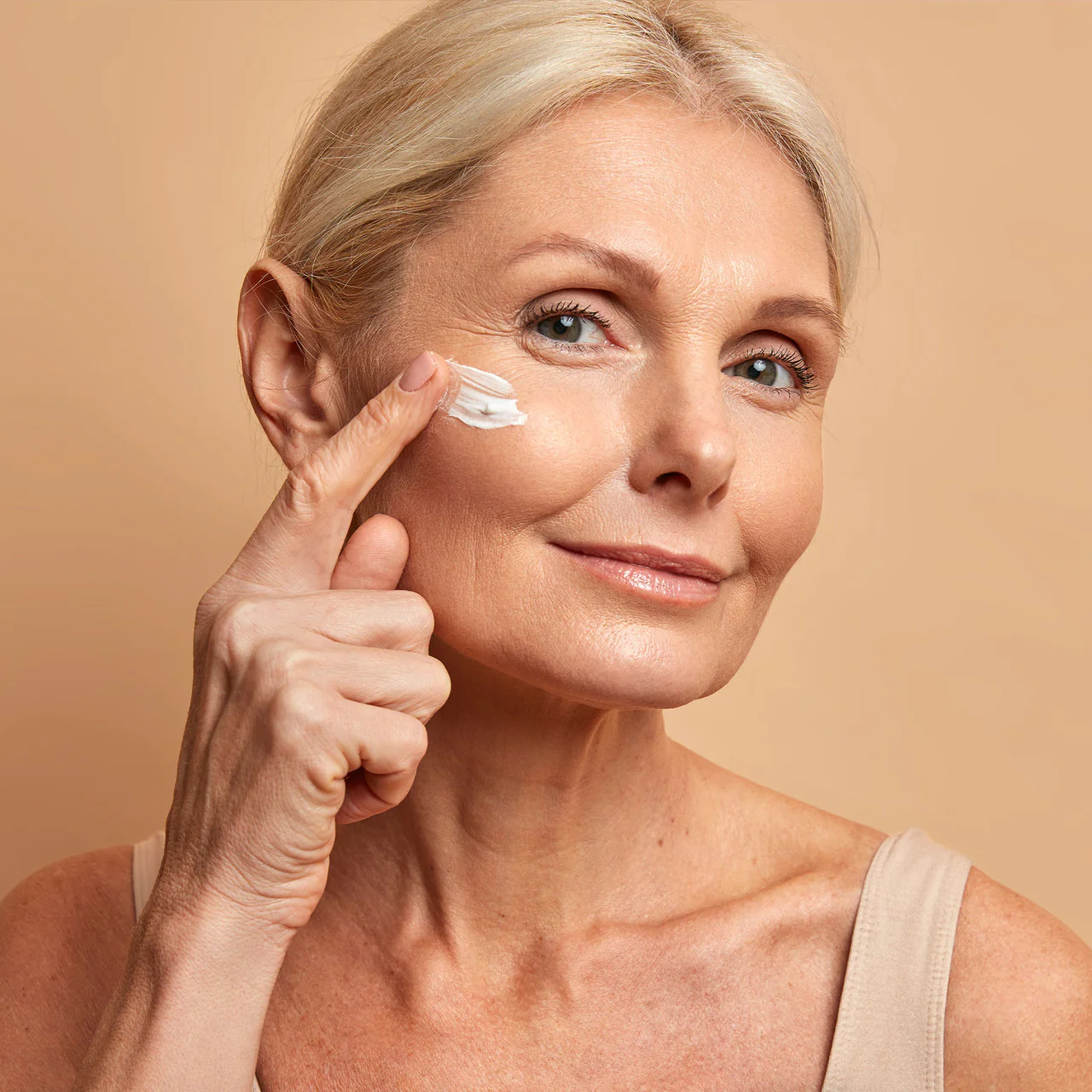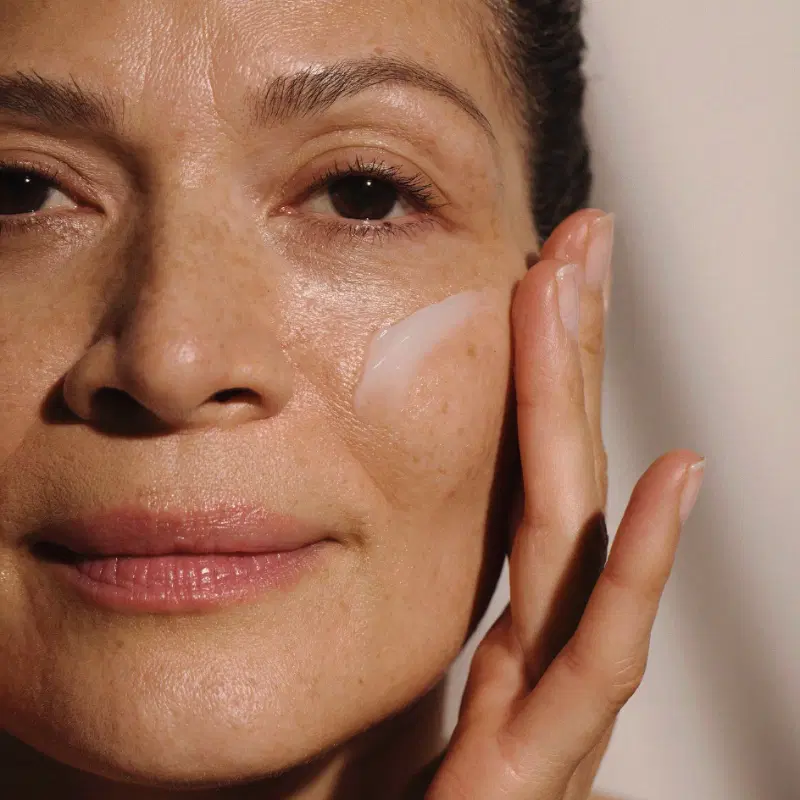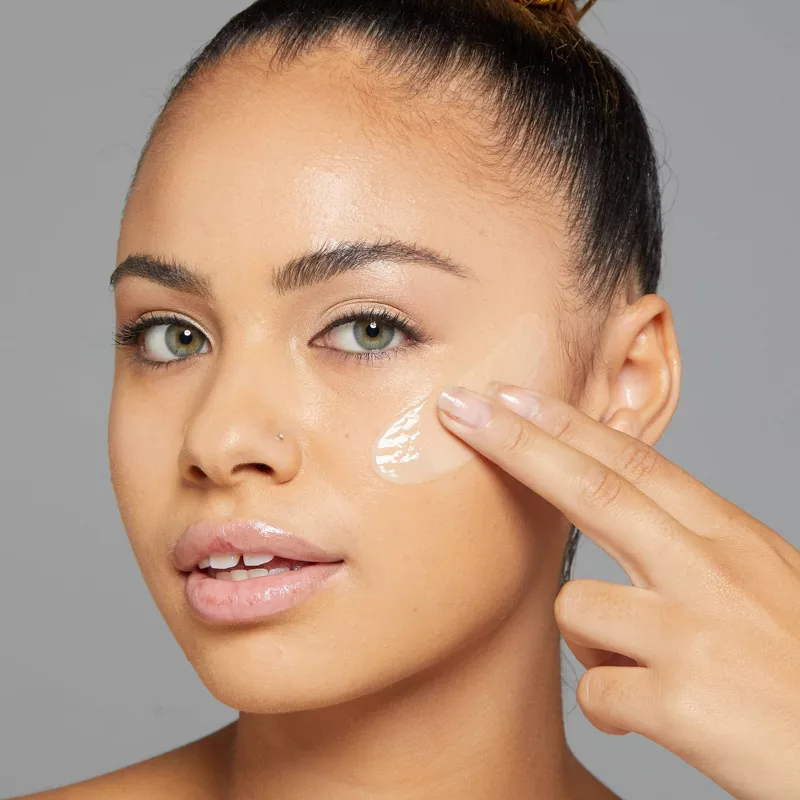Understanding Estrogen’s Role in Skin Health
Estrogen plays a crucial role in maintaining skin health and appearance. This hormone contributes to skin thickness, moisture retention, and elasticity. As women age, estrogen levels naturally decline, leading to various skin concerns. These issues often include dryness, fine lines, wrinkles, and loss of firmness. The best estrogen face cream aim to address these concerns by delivering estrogen or estrogen-like compounds topically to the skin. These products work to stimulate collagen production, improve skin hydration, and enhance overall skin texture.
The benefits of estrogen for skin health have been well-documented in numerous scientific studies. Research shows that estrogen can increase skin thickness, reduce the appearance of wrinkles, and improve skin elasticity. Additionally, estrogen helps to maintain the skin’s natural barrier function, protecting it from environmental stressors and moisture loss. However, it’s important to note that not all estrogen face creams are created equal. The effectiveness of these products depends on various factors, including the type and concentration of estrogen or phytoestrogens used, as well as the overall formulation of the cream. Therefore, choosing the right estrogen face cream requires careful consideration of ingredients, potential benefits, and possible side effects.

Types of Estrogen Used in Face Creams
Estrogen face creams typically contain one of two types of estrogen: synthetic estrogen or phytoestrogens. Synthetic estrogen, also known as hormone replacement therapy (HRT) creams, contains laboratory-created estrogen that mimics the body’s natural hormone. These creams are available by prescription only and are typically used under medical supervision. On the other hand, phytoestrogens are plant-based compounds that have estrogen-like effects on the skin. These are found in over-the-counter products and are considered a milder, natural alternative to synthetic estrogen. Common sources of phytoestrogens include soy, red clover, and wild yam.
Each type of estrogen offers unique benefits and potential drawbacks. Synthetic estrogen creams are often more potent and may provide more noticeable results. However, they also carry a higher risk of side effects and are not suitable for everyone. Phytoestrogen creams, while generally safer and more widely accessible, may offer more subtle results. The choice between synthetic and phytoestrogen creams often depends on individual needs, preferences, and medical history. It’s crucial to consult with a healthcare provider before starting any estrogen therapy, even topical treatments, to ensure safety and appropriateness for individual circumstances.
Key Ingredients to Look for in Estrogen Face Creams
When searching for the best estrogen face cream, several key ingredients should be considered. Firstly, look for products containing well-researched phytoestrogens such as genistein from soy, isoflavones from red clover, or diosgenin from wild yam. These compounds have been shown to have beneficial effects on skin aging. Additionally, effective estrogen face creams often include other skin-boosting ingredients. Hyaluronic acid, for instance, helps to hydrate the skin and improve its ability to retain moisture. Peptides can stimulate collagen production, enhancing skin firmness and elasticity.
Antioxidants like vitamins C and E protect the skin from free radical damage and can help brighten the complexion. Some creams also incorporate retinol, a vitamin A derivative known for its anti-aging properties. It’s also beneficial to look for creams that contain nourishing oils such as jojoba, argan, or rosehip oil. These oils can help to moisturize the skin and improve its overall texture. Ingredients like niacinamide can help to even out skin tone and reduce the appearance of fine lines. When evaluating estrogen face creams, it’s important to consider the overall formulation and not just the presence of estrogen or phytoestrogens. A well-formulated product will combine these key ingredients in a way that maximizes their benefits while minimizing potential irritation or other side effects.

Top Estrogen Face Creams on the Market
Several estrogen face creams have gained popularity due to their effective formulations and positive user experiences. One top contender is the Emepelle Night Cream, which contains methyl estradiol-propanoate (MEP) technology. This non-hormonal ingredient activates estrogen receptors in the skin, potentially providing the benefits of estrogen without systemic absorption. Another highly-rated option is the Alchimie Forever Kantic+ Intensely Nourishing Cream, which uses phytoestrogens from wild yam to improve skin elasticity and hydration.
For those seeking a more natural approach, the Eminence Organic Skin Care Age Corrective Night Cream incorporates phytoestrogens from botanical sources like chickpea and flax seed. The Murad Resurgence Retinol Youth Renewal Night Cream combines retinol with wild yam extract for a potent anti-aging effect. Additionally, the No7 Restore & Renew Face & Neck Multi Action Night Cream includes phytoestrogens along with peptides and ceramides to address multiple signs of aging.
These products have received positive reviews for their ability to improve skin texture, reduce the appearance of fine lines and wrinkles, and enhance overall skin radiance. However, it’s important to note that individual results may vary, and what works best for one person may not be ideal for another. Factors such as skin type, age, and specific skin concerns should be considered when choosing an estrogen face cream.
Application Tips for Maximum Effectiveness
To maximize the benefits of estrogen face creams, proper application is key. Begin with a clean, dry face to ensure optimal absorption of the product. Gently cleanse the skin using a mild, pH-balanced cleanser and pat dry with a soft towel. Next, apply any serums or treatments that are part of your skincare routine. Once these have been absorbed, take a small amount of the estrogen face cream and dot it evenly across the face and neck.
Using upward and outward motions, gently massage the cream into the skin until fully absorbed. Pay special attention to areas prone to showing signs of aging, such as the forehead, around the eyes, and the neck. For best results, most estrogen face creams should be applied at night, as this is when the skin’s natural repair processes are most active. However, always follow the specific instructions provided with the product.
If using a cream with synthetic estrogen, be sure to wash your hands thoroughly after application to avoid transferring the hormone to other parts of the body or to others. Consistency is crucial when using estrogen face creams. Regular, nightly application over an extended period is typically necessary to see noticeable results. It’s also important to be patient, as it may take several weeks or even months to observe significant improvements in skin appearance and texture.

Potential Side Effects and Precautions
While estrogen face creams can offer significant benefits, it’s important to be aware of potential side effects and take necessary precautions. Common side effects may include skin irritation, redness, or itching, especially when first starting to use the product. If these symptoms persist or worsen, discontinue use and consult a healthcare provider. For creams containing synthetic estrogen, there’s a potential risk of systemic absorption, which could lead to hormonal imbalances.
This is why these creams are typically only available by prescription and should be used under medical supervision. Individuals with a history of hormone-sensitive cancers, such as breast or ovarian cancer, should avoid using estrogen face creams without explicit approval from their oncologist. Pregnant or breastfeeding women should also consult their healthcare provider before using these products. Even with over-the-counter phytoestrogen creams, it’s wise to perform a patch test before full application to check for any adverse reactions.
Apply a small amount of the product to a discreet area of skin and wait 24-48 hours to ensure no negative reaction occurs. It’s also crucial to protect the skin from sun damage when using estrogen face creams, as some ingredients may increase photosensitivity. Always use a broad-spectrum sunscreen during the day, even if the estrogen cream is only applied at night.
Complementary Skincare Practices
While estrogen face creams can be effective, they work best as part of a comprehensive skincare routine. Incorporating complementary practices can enhance the overall health and appearance of the skin. A crucial step is proper cleansing. Use a gentle, non-stripping cleanser to remove dirt, oil, and makeup without disrupting the skin’s natural barrier. Follow this with a toner to balance the skin’s pH and prepare it for subsequent treatments. Exfoliation is another important practice, helping to remove dead skin cells and promote cell turnover.
However, be careful not to over-exfoliate, as this can lead to irritation and sensitivity. A weekly gentle exfoliation is typically sufficient for most skin types. Hydration is key to maintaining healthy skin, especially as estrogen levels decline. In addition to using a moisturizing estrogen face cream, consider incorporating a hydrating serum containing ingredients like hyaluronic acid. Don’t forget about the delicate eye area. Use a specialized eye cream to address concerns like fine lines and puffiness.
Lifestyle factors also play a role in skin health. Maintain a balanced diet rich in antioxidants, stay hydrated by drinking plenty of water, and get adequate sleep to support the skin’s natural regeneration processes. Regular exercise can improve circulation, bringing more nutrients to the skin. Lastly, stress management techniques like meditation or yoga can help reduce cortisol levels, which can negatively impact skin health.
Natural Alternatives to Estrogen Creams
For those who prefer a more natural approach or cannot use estrogen-based products, several alternatives can help support aging skin. It can help improve skin firmness and reduce the appearance of fine lines and wrinkles. Another effective natural ingredient is rosehip oil, rich in vitamins A and C, which can help boost collagen production and improve skin elasticity.
Gotu kola is an herb known for its ability to improve circulation and promote collagen synthesis. Products containing this ingredient may help firm and tighten the skin. Antioxidant-rich ingredients like green tea extract, resveratrol, and vitamin C can protect the skin from free radical damage and may help improve overall skin tone and texture. For hydration, look for products containing natural humectants like aloe vera, glycerin, or honey.
These ingredients help attract and retain moisture in the skin, improving its plumpness and reducing the appearance of fine lines. Peptides, while not strictly “natural,” are amino acid chains that can help stimulate collagen production and improve skin firmness. Many natural skincare brands incorporate peptides into their formulations. While these alternatives may not provide the exact same effects as estrogen, they can still offer significant benefits for aging skin when used consistently as part of a comprehensive skincare routine.

The Role of Diet in Supporting Skin Health
Diet plays a crucial role in supporting skin health, particularly as estrogen levels decline with age. Consuming a diet rich in phytoestrogens can help support skin health from the inside out. Soy products, such as tofu and edamame, are excellent sources of isoflavones, a type of phytoestrogen. Flaxseeds and sesame seeds also contain high levels of lignans, another type of phytoestrogen. Including these foods in the diet may help support skin elasticity and hydration.
Antioxidant-rich foods are also essential for skin health. Berries, dark leafy greens, and colorful vegetables contain compounds that can help protect the skin from oxidative stress and environmental damage. Omega-3 fatty acids, found in fatty fish like salmon, sardines, and mackerel, can help maintain skin hydration and reduce inflammation. Nuts and seeds, particularly walnuts and chia seeds, are also good sources of omega-3s.
Collagen-boosting foods can support skin structure and elasticity. Bone broth, for example, is rich in collagen and other nutrients that support skin health. Vitamin C-rich foods like citrus fruits, bell peppers, and strawberries are important for collagen synthesis. Staying hydrated is crucial for maintaining skin moisture and plumpness. Aim to drink plenty of water throughout the day and include hydrating foods like cucumbers and watermelon in the diet. By focusing on a balanced, nutrient-rich diet, it’s possible to support skin health from within, complementing the effects of topical estrogen face creams.
Future Trends in Estrogen-Based Skincare
The field of estrogen-based skincare is continually evolving, with new technologies and formulations on the horizon. One emerging trend is the development of more targeted delivery systems for estrogen and phytoestrogens. These advanced formulations aim to enhance the penetration of active ingredients into the skin while minimizing systemic absorption. Researchers are also exploring new sources of phytoestrogens, looking beyond traditional options like soy and red clover. Some studies are investigating the potential of lesser-known botanicals that may offer unique benefits for aging skin.
Another area of focus is the combination of estrogen or phytoestrogens with other cutting-edge skincare ingredients. For example, some researchers are exploring the synergistic effects of combining phytoestrogens with peptides or growth factors to enhance skin rejuvenation. Personalized skincare is also likely to play a significant role in the future of estrogen-based products. As our understanding of individual genetic variations and skin types improves, we may see more tailored approaches to estrogen skincare.
This could involve customized formulations based on an individual’s specific skin needs and hormonal profile. Additionally, there’s growing interest in the potential of topical estrogen products for addressing specific skin concerns beyond general anti-aging effects. For instance, some researchers are investigating the use of estrogen creams for treating hyperpigmentation or improving wound healing in aging skin.
